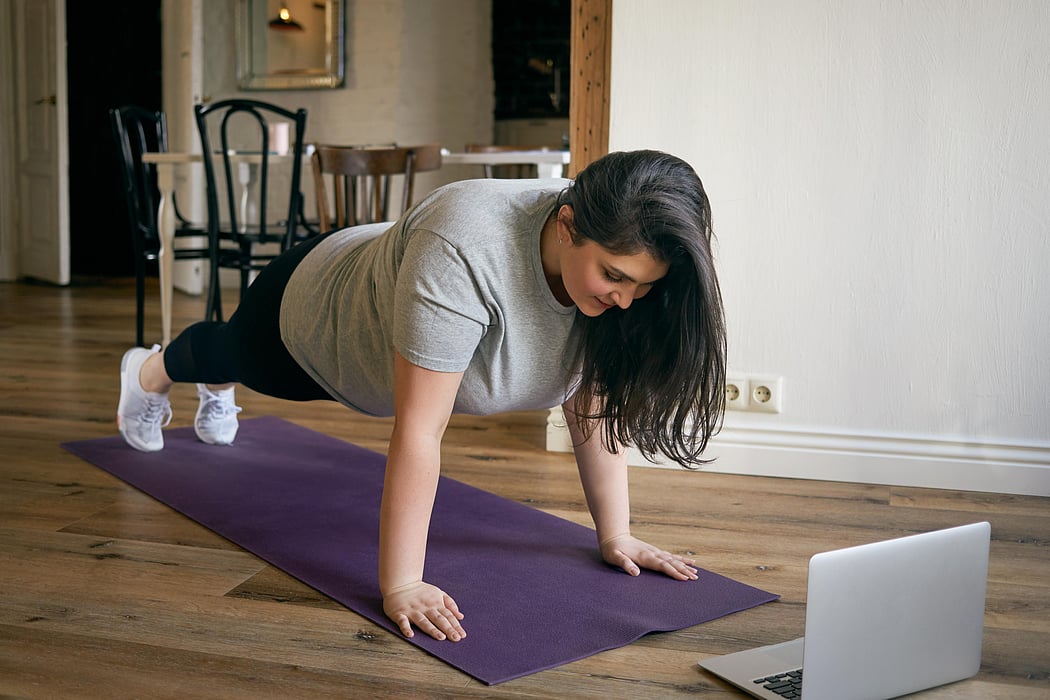5 Functional Strength Training Moves to Help Improve Your Everyday Well-Being

Without stepping foot inside a gym, you still do some sort of physical activity every day (yes, even if you spend your workweek sitting behind a desk). This can include activities such as bringing groceries in from the car, climbing stairs, walking from the parking lot to your office, running errands and playing with your kids.
These everyday activities might seem small, but they can still leave you feeling tired and out of breath. Enter: functional strength training.
Adults should perform strength training exercises at least 2 days a week, according to the Physical Activity Guidelines for Americans from the U.S. Department of Health and Human Services. Functional strength training specifically can help keep your body strong and help you go about your life with more ease and stability (think: carrying more groceries in from the car in one go, climbing the stairs to your apartment without feeling winded or picking your kids up without back pain).
If you’re not sure where to start, the beginner-friendly at-home workout below can help.
For some functional strength training ideas, we spoke with TJ Mentus, certified personal trainer and Garage Gym Reviews expert panelist. Here, he shares his top 5 functional strength training exercises.
A Beginner-Friendly Functional Strength Training Workout
1. Inchworm
The inchworm is a full-body movement that mainly works the arms and core, and it can also help with shoulder mobility. This is a great warm-up exercise to get the whole body moving.
How to do inchworms:
- Start from a standing position and bend down to reach your hands to the ground.
- Walk your hands out until you are in a straight-arm plank position with your hands under your shoulders and your body in a straight line.
- Walk your hands back to your feet and stand up. Try to take 4-6 steps total with your hands each time.
- Start with 2-3 sets of 5.
2. Hand-release push-up
The hand-release push-up is a good option for beginners because it encourages full range of motion and is less time under tension for the upper body than a traditional push-up.
How to do hand-release push-ups:
- Start from a plank position with your hands slightly wider than shoulder width and your core tight to help maintain a flat back.
- Lower your chest down to the ground in a controlled manner by bending your elbows back toward your body.
- When your chest touches the ground, lift your hands up off the ground by pinching your shoulder blades together.
- Place your hands back on the ground and in one motion push your chest and body off the ground to return to the plank position.
- If this is too difficult, perform this exercise from your knees.
- A good goal to work up to is 3 sets of 15-20 reps.
3. Reverse lunges
Reverse lunges are great for strengthening the lower body, and for beginners, just bodyweight alone can still offer plenty of resistance.
How to do reverse lunges:
- From a standing position, step one foot back about two feet behind you.
- Gently lower your back knee to lightly touch the ground.
- Once it makes contact with the ground, press through your front heel and drive your hips forward to return to standing.
- Repeat on the other leg. Make sure that when you’re in the lunge position your front knee is over your heel and your back knee is directly under your hips so they make 90-degree angles.
- Perform 3 sets of 8-12 each leg.
4. Straight-leg sit-up
The straight-leg sit-up is a variation on the standard sit-up that’s a bit safer for the back, and from a functional perspective, it helps to improve your ability to get up off the ground and strengthen your core.
How to do straight-leg sit-ups:
- Start by laying on your back.
- Reach your arms up toward the ceiling and pull with your abs to lift your upper body up to a seated position.
- As you sit up, continue to raise your arms to the ceiling.
- Lower back down to the floor in a controlled manner.
- Start with 3 sets of 10.
5. Mountain climber
The mountain climber is a good core exercise that can be used to build up cardio endurance because it can significantly increase your heart rate.
How to do mountain climbers:
- Get in a straight-arm plank position.
- Bring one knee forward into your chest. Then, bring your other knee into your chest as you bring the starting foot back so that you’re switching off between each leg. This movement will require your feet to briefly be off the ground at the same time.
- Continue alternating switching legs.
- If this is too difficult, try moving just one leg at a time.
- Try this in a tabata format for a short high-intensity interval training (HIIT) workout. Do 8 rounds of 20 seconds of mountain climbers and 10 seconds of rest (4 minutes total). The goal is to go as hard as you can in that 20 seconds and get in as many reps as possible.
Related Posts
Besides Boosting Health, a Vegan Diet Might Save You Money
WEDNESDAY, Sept. 6, 2023 (HealthDay News) -- Going vegan doesn’t have to mean...
Las tasas de mortalidad por cáncer aumentan junto con las deudas médicas
MIÉRCOLES, 7 de junio de 2023 (HealthDay News) -- Las personas que están...
¿Las reuniones por Zoom matan la creatividad?
MIÉRCOLES, 27 de abril de 2022 (HealthDay News) -- Las reuniones por Zoom se...
President Biden is the Picture of Good Health, His Doctor Reports
FRIDAY, Feb. 17, 2023 (HealthDay News) – In a routine physical that will likely...
